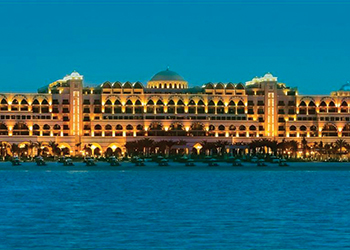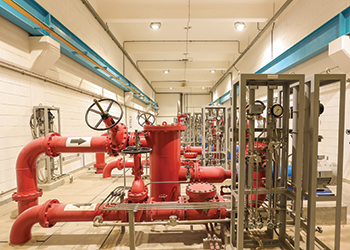
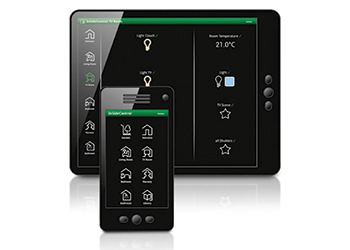 GRMS hotel touch panels.
GRMS hotel touch panels.
MANOJ SONI, vice-president, Eco Building Division – Gulf and Pakistan of Schneider Electric, discusses how smart lighting solutions can help conserve energy.
Lighting today accounts for a massive portion of energy consumed in residential and commercial sectors. According to the International Energy Agency, it represents around 20 per cent of global electricity consumption.
Architects and builders still widely install incandescent bulbs across residential units, offices, industrial and public spaces despite the inability of such lighting to effectively conserve energy. The good news is that switching to smart lighting choices means energy savings down the line!
As part of the widespread movement towards automated and smart solutions to reduce energy wastage and lower the carbon footprint, regional governments are also looking to impose strict regulations to advocate environment-friendly lighting that can reduce public spending while also decreasing carbon dioxide emissions.
In fact, in 2015, the Abu Dhabi Municipality moved to retrofit traditional lighting systems with LED (light-emitting diode) lights to save more than Dh3 million ($816,738) per annum. This initiative was implemented in a bid to reduce the cost of public lighting by 60 to 75 per cent over the next 20 years and lower light pollution rates in the rapidly growing and diversifying emirate.
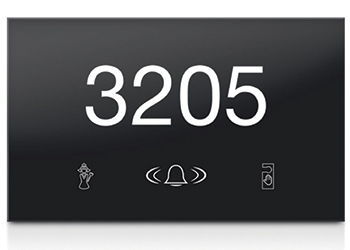 |
|
GRMS hotel touch panels. |
As energy costs constantly grow in proportion to the surging population and their dynamic needs, every type of infrastructure can adversely impact the environment. This is why switching to intelligent lighting is a worthwhile investment. With designs that combine the best in information technology (IT), functionality, and design, these solutions can blend in with various interiors and provide peace of mind when occupants are away. Over a period of time, they will also boost building value while creating a productive and comfortable living or working ecosystem.
The onset of Internet of Things (IoT) has brought lighting to the digital era, and presented us with new solutions that can help us gravitate towards a more ‘zero-carbon’ lifestyle. By integrating IT with OT (operational technologies), automated technologies are helping residents and building owners not only to utilise environment-friendly lighting, but also control consumption through providing visibility on usage analytics and in-built motion sensors.
The smart lighting market is part of intelligent building management systems (BMS), a market that is worth billions of dollars today. According to a study by market research firm MarketsandMarkets, the building automation system market is expected to grow at a CAGR (compound annual growth rate) of 10.65 per cent between 2016 and 2022.
Schneider Electric believes that right lighting control can slash energy costs by up to 50 per cent as compared to traditional systems, and provide tailored solutions that can be easily implemented across businesses and homes.
The company recently introduced Unica, an international flexible wiring devices range that can be adapted to installation habits and comprises more than 150 electrical and electronic functions in light and power control, socket-outlets, protection, as well as energy savings. Unica also works as a wireless system with its KNX system components, and has a range of variants to suit customers’ aesthetic requirements. It is an innovative addition to the smart home environment.
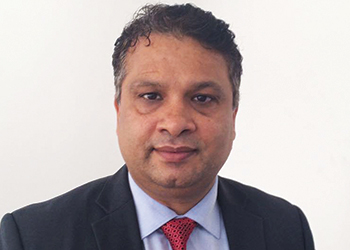 |
|
Soni ... focus on conserving energy. |
The KNX open bus technology links presence detectors to switching and dimming actuators for flexible and expandable automated control. The presence detectors activate artificial lighting if and when natural light is below a preset level, and automatically switches off lights when areas are unoccupied or when there is sufficient natural light. This product uses 35 per cent less energy by tailoring consumption to occupation patterns. Building owners also reduce installation labour or maintenance costs through leveraging this centralised and scalable system.
Schneider Electric also introduced guestroom management solutions (GRMS) to the GCC region in 2015, targeted at the hospitality industry. The company’s GRMS combines presence sensors with patented thermal technology and door contacts to automatically detect when a room is unoccupied, adjusting temperature or lighting conditions accordingly while guests are away. This solution enables the hospitality industry to reduce operating and energy costs, and lower their carbon footprint in the long run.
These powerful room controllers further provide hotel staff with a large amount of data on resource consumption and visibility on related trends. Using such analytics, hotel owners can proactively plan for energy saving measures and operational efficiencies.
Automated lighting solutions integrated into the GRMS help hotel owners realise considerable financial savings throughout the lifecycle of a hotel and significantly save energy. Along with its lighting solutions, Schneider Electric offers a wide range of sockets and switch designs for various building environments and needs.





















_0001.jpg)


.jpg)
















.jpg)








.jpg)



